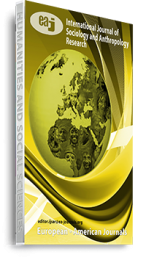During our travels along the coast from South to North to visit the main capital cities of the different states, we could confirm an accelerated vertical residential expansion of neighbourhoods in these urban zones, seemingly uncontrolled and supposedly unplanned, with heights of skyscrapers varying from twelve to forty floors built next to each other, surrounded by areas with the dominant presence of houses. In this article, we investigate the whereabouts of the local population that lived in houses in these areas before the verticalisation of the neighbourhoods and search for answers for the question if verticalisation of the city is contradictory to equal urban rights, quality of life and access for everybody living in the city. A special approach was taken, as the production of architecture photography of the skyscraper in theses neighbourhoods allowed us to observe the urban areas very closely. For the consecution of the aim of the research, we used data obtained from the Brazilian Institute of Geography and Statistics (IBGE), based on the 2000 and 2010 censuses, to identify the increase in number of apartments in the urban zones of the investigated cities in this period of time to proof social-spatial segregation, causing the migration of the former local population, also confirmed by in loco observations and interviews conducted with residents of the area during the artwork production from 1997 to 2016. We concluded that the former local population in these areas were forced to migrate to less expansive neighbourhoods in the cities or even left the urban zones to live in peripheral zones close to the city. The accelerated and widely “uncontrolled and unplanned” verticalisation processes resulted in social-spatial segregation of the city. In the urban agglomeration, a division has been taken place between privileged and unprivileged zones. In the privileged zones, the construction of huge walls around the condominiums and the lack of people in the streets are provoking increasing security issues and offer limited access only for a privileged portion of the population, whereas, in the unprivileged zones, due to the physical distant to the central working neighbourhoods of the city, people depend on cars. This creates a densification of the rich and an acceleration of the sprawling tendency of poverty. As a result of the process of verticalisation of neighbourhoods in capital cities on the coast of Brazil from North to South, we could identify several problems related to the process, based on our in loco observations and interviews carried out with residents during our field study, such as waterproofing coverings that are causing inundations of streets in the neighbourhoods, increase of temperature, wind funnelling, traffic jams, air pollution and security concerns, as well as large volumes of urban runoff, deficient water supply, wastewater and solid waste collection. One scenario in the future is that the neighbourhoods of the investigated coastal cities will suffer even more spatial segregation due to continued valorisation of its urban land, as areas receiving infrastructure elements. In consequence, the taxation increases and real estate pressure intensifies. The low-income population, known as local communities, are going to be driven out to more distant locations. Where they lived before, their houses are going to be replaced to built skyscraper. The accelerated verticalisation process, as observed in loco in coastal cities from the South to the North of Brazil, has produced increasingly segregated cities, rather than bring together and mix their citizen. As the results of our research show, the continuing and accelerated vertical expansion process in neighbourhoods of the main coastal cities in Brazil is full of contradictions and does not reflect on equal rights and access to the city for all its citizens, but rather reflects on social-spatial segregation. Future research needs to be carried out to accompany closely the urban development processes of the neighbourhoods in the main coastal cities included in this study.
Keywords: Architecture, Brazil, Fine-Art Photography, Fortaleza, Natal, Recife, Rio de Janeiro, Skyscraper, Social-spatial segregation, Verticalisation of coastal state capital cities

